A few years ago we observed damage to cranberries likely caused by an unknown “mirid” bug (Hemiptera: Miridae). These insects are known as true bugs and have piercing-sucking mouthparts to suck out plant juices. The species was identified as Plagiognathus repetitus (Hemiptera: Miridae). The insect seems to damage young leaf and flower buds early in the season (May). In June, we observed deformed leaves and flowers as a result of the feeding damage. This damage appears to cause serious reduction in yield. The damage was likely caused by the nymphs in May-June, as adults were seen in late June-early July. At this time of the year, nymphs are very small- mostly 1st instars.
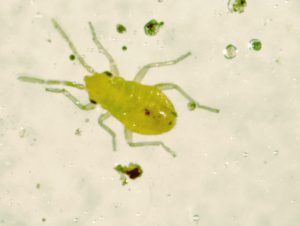
Nymph of Plagiognathus repetitus (Hemiptera: Miridae)
We know little about the biology and management of this insect. Mirids can be serious pests of other agricultural crops. For example, the tarnished plant bug, Lygus spp., is an important pest of cotton causing injury to the flowering buds. As for Plagiognathus repetitus, Franklin (1950) writes that, in Massachusetts, it overwinters as eggs and the eggs hatch in early June (Franklin H.J. 1950. Cranberry insects in Massachusetts. Massachusetts Agricultural Experiment Station Bulletin 445. 88 pp). In New Jersey, the eggs likely start to hatch in May, so scouting for nymphs should start at this time of the year. Adults were seen in Massachusetts in late June-early July (similar to our observations). The insect is known to occur from Ontario (Canada) to Virginia and is an ericaceous plant specialist. It has been recorded form cranberry, sheep laurel, Vaccinium sp., and related plants. Franklin noted that this insect is rarely seen in high numbers; this was not the case three years ago where we saw high numbers in one farm that had not sprayed broad-spectrum insecticides pre-bloom in several years.
At this time of the year, we recommend growers to scout for this insect. Carefully look for the nymphs in sweep net samples. If needed, use a broad-spectrum insecticide like Diazinon (no aerial applications allowed) or Lorsban (only pre-bloom applications allowed for Ocean Spray growers) for its control.
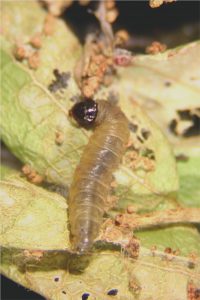
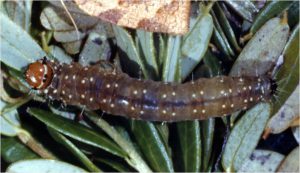
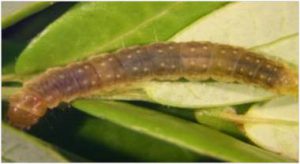
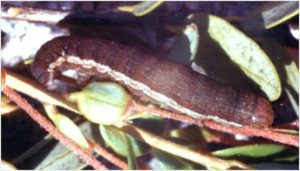
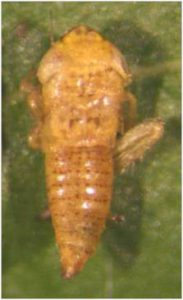
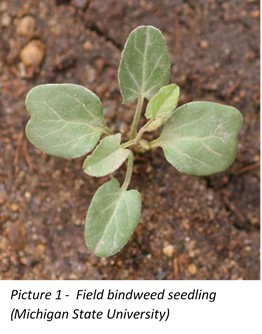
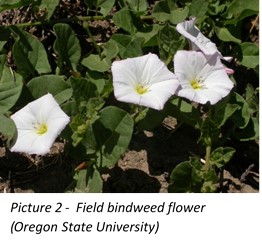 ome. When juvenile stems are broken, they exude a milky sap. On mature plants, leaves are arranged opposite along the stem and are arrow shaped. Lobes at the base of the leaf point away from the petiole. Stems are smooth to slightly hairy.
ome. When juvenile stems are broken, they exude a milky sap. On mature plants, leaves are arranged opposite along the stem and are arrow shaped. Lobes at the base of the leaf point away from the petiole. Stems are smooth to slightly hairy.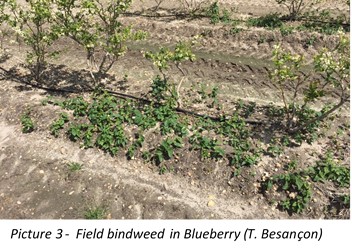 ydrates produced in the leaves to the roots. It is critical that NO timing be missed or be late! One single missed tillage can negate all the effort expended up to that point. Expect to continue the effort for 4 to 6 months! Success may require more time if the effort was not started when carbohydrate reserves in the weed were low at the start of the process.
ydrates produced in the leaves to the roots. It is critical that NO timing be missed or be late! One single missed tillage can negate all the effort expended up to that point. Expect to continue the effort for 4 to 6 months! Success may require more time if the effort was not started when carbohydrate reserves in the weed were low at the start of the process.